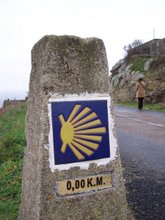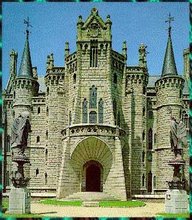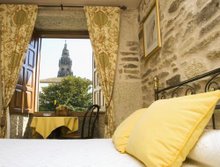
Spain has 17 independent regions (comunidades autónomas)
Caution: teacherly tone & historical minutia ahead
Have you ever wondered why the Spanish language (español) is sometimes called Castilian (castellano)? Of the many languages of Spain, the dialect called Castilian won out as the national language, by decree of Philip V in 1714. In a country that had a shifting terrain of tongues, Castilian became the common gound on which all Spaniards could stand.
Of the 17 regions of Spain, I’ll be traveling through three: Basque country, Castilla y León, and Galicia, where the pilgrimage terminus of Santigao de Compostela is.
In the Basque region they speak a non-romance language, Basque, aka Euskera, thought to have been brought to Spain by immigrants from Aisa Minor around 2000 bc. In Castilla y León they speak castellano, or regular old Spanish. In Galicia the traditional language is Galician, akin to Portuguese. While Castilian articles are el, la, los, and las, Galician has o, as, os, and as. Thus the Las Artes Hotel becomes the As Artes Hotel.
The rivers of many different languages have flowed and still flow through Spain. In the 6th century bc the first Iberians mingled with Celts from central Europe, becoming the Celtibarians, who spoke a form of Celtic. Romans invaded in the 1st century, and locals learned Latin from Roman traders and soldiers, mixing it with their local dialects to form Vulgar Latin.
Latin was the official language of Spain until around 700 ad, when Arabic-speaking Islamic groups from Northern Africa called Moors conquered most of Spain. Arabic and the Mozarabic dialect then dominated. When Christian kingdoms reconquered Moorish Spain, Latin dialects came back, especially a dialect of the Northern Central plains called Castilian, which would end up becoming the official language of Spain.





No comments:
Post a Comment